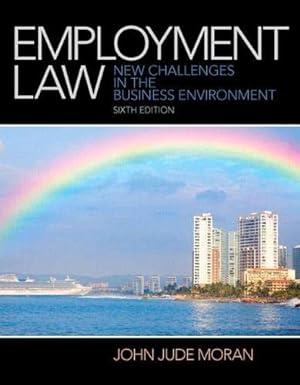Question
Please help me with my homework assignment- Is the following correct? 1.The major disadvantage of a sole proprietorship is: a. the proprietor is taxed as
Please help me with my homework assignment- Is the following correct?
1.The major disadvantage of a sole proprietorship is:
a. the proprietor is taxed as a limited liability corporation.
b. the proprietor receives all profits.
**c. the proprietor undertakes limited liabilities.
**d. the proprietor bears the burden of all losses.
2.After Kyle and Larsen have been partners for three years, Kyle learns that Larsen
has declared bankruptcy. What happens to the partnership?
a. Nothing. It continues as always.
**b. It dissolves due to the bankruptcy.
c. It dissolves due to admission.
d. It dissolves due to withdrawal
3.Which of the following IS NOT a basic requirement of a merger?
a. Each board of directors must approve the merger.
b. All corporate officers for each corporation must approve the merger.
c. The shareholders of each corporation must approve the merger.
**d. The state must issue a certificate of merger once other formal requirements are
Met
4.A secured party in a secured transaction is:
a. the party who owes payment.
b. the party who owes performance.
**c. the party who owns the collateral.
d. the party in whose favor there is a security interest.
5.One disadvantage of an LLC is that:
a. it is taxed like a partnership, unless the members choose differently.
b. its members have limited liability for LLC debts.
c. there is no uniform law governing LLCs in the United States.
**d. they are subject to extensive regulation by the Treasury Department
6.Mitchell owns 3,000 shares of Dynamix Corporation. Dynamix decides to merge
with Clomator, Inc., which makes plastic packaging for food. Mitchell is very unhappy
about this decision. If Mitchell does not want to sell his stock, what is one other option he
has to express his dissatisfaction?
a. If appraisal rights are available, he may choose to exercise those rights.
b. If he follows the correct procedure, he may demand a short-form merger.
c. He may use his preemptive rights.
**d. He may require a dissolution
7.Which of the following debts ARE dischargeable in a liquidation bankruptcy?
a. Back taxes.
**b. Loans taken to pay federal taxes.
c. Loans taken to pay for home repairs.
d. Child support payments.
8.When payment of debt is guaranteed by personal property owned by the debtor or
in which the debtor has a legal interest, you have:
a. a bankruptcy.
b. a conversion.
**c. a secured transaction.
d. a liquidation.
9.When a debtor defaults on a loan, it means that:
a. the debtor has collateralized the loan.
b. the debtor has failed to pay the loan as promised.
**c. the debtor made a material misrepresentation on the loan application.
d. the debtor has paid the loan and is free and clear of any further obligations to
the creditor.
10.Perfection is the legal process by which secured parties:
a. protect debtors against excessive claims by other debtors.
**b. protect themselves against the claims of third parties who want their debts
satisfied out of the same collateral.
c. protect themselves against the claims of third parties who have security
interests in the secured party's collateral.
d. protect debtors against excessive claims by other creditors.
11.When two perfected secured creditors have rights to the same collateral, which
party takes priority?
a. The party who attached first.
**b. The party who filed or took possession first.
c. The party who signaled a willingness to negotiate first.
d. The party who converted first.
12.One of the basic remedies for default consists of:
**a. execution and levy.
b. conversion.
c. trespass.
d. perfection
13.What are the two goals of bankruptcy law in the United States?
**a. To protect the real property of creditors and its value.
b. To make loans more available to those who have fallen on hard times and to
ensure that third parties will guarantee loans.
c. To give debtors a fresh start and to provide equitable treatment to creditors
competing for debtor assets.
d. To hide debtor assets to the greatest extent possible and to relieve debtors of all
debts owed to banks
14.The "adequate protection doctrine" states that:
a. all debtors must receive adequate physical protection from creditors.
b. creditors must be protected against all losses in bankruptcy.
c. secured creditors should not lose their security as a result of an automatic stay.
**d. unsecured creditors should be protected from the aggressive behavior of
secured creditors.
Step by Step Solution
There are 3 Steps involved in it
Step: 1

Get Instant Access to Expert-Tailored Solutions
See step-by-step solutions with expert insights and AI powered tools for academic success
Step: 2

Step: 3

Ace Your Homework with AI
Get the answers you need in no time with our AI-driven, step-by-step assistance
Get Started


